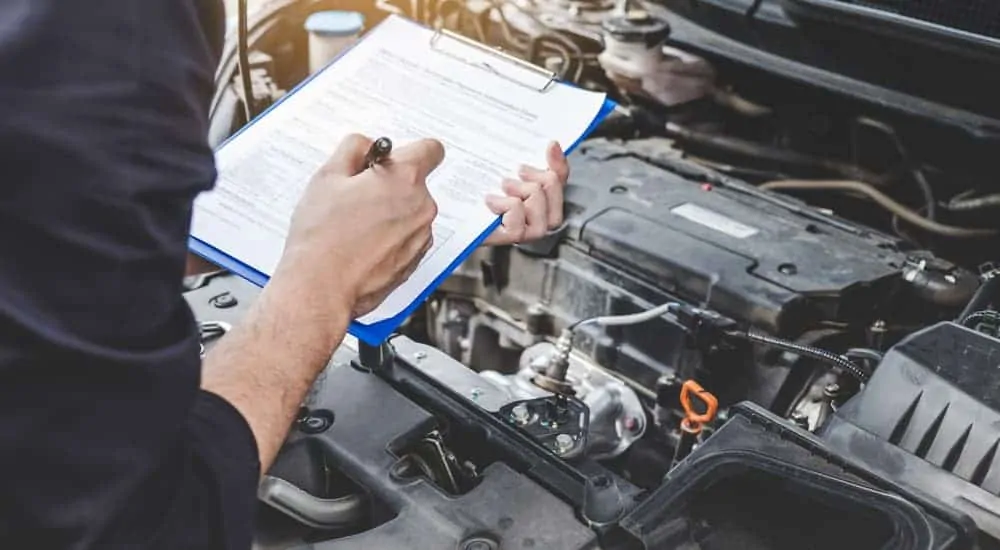Your lease term is coming to an end—is it time to panic? What should you be doing to prepare for the end of lease turn-in? Preparing for the end of the lease is important, and especially if this is your first leasing experience, there are some things you should know about the return process. Giving yourself enough time to prepare is one way to ensure a smooth return, and another is checking with the auto manufacturer to see if they have programs developed to guide you through the process. But there are a lot of things to be aware of, so let’s take a look at some things to keep in mind as the end of your lease approaches and your options for when the lease has come to an end.
The Inspection
Leasing companies charge you for any damages to the vehicle, which can be considered more than normal wear and tear. This is so that they can get the highest value possible on the next sale of the vehicle without having to spend money reconditioning the vehicle. But how do you know what normal wear and tear looks like? There are certain things to look for, and you will want to inspect your car thoroughly before the lease return process gets started. Generally, the lease inspection process starts 60-90 days before the end of the lease, so you will want to be prepared.
The leasing company will contact you to let you know the lease is coming to an end soon and will schedule an appointment for inspection. During the inspection, they will be looking for any damage that they deem excessive wear and tear, and this means, essentially, that they are looking for damage that will cost them more than average to repair. The lessor (the leasing company) will most likely be using an independent company who will come out to your home, or even your workplace, and the whole process should take no longer than 45 minutes.
Normal common sense and manners apply for this meeting. Be kind to the inspector. If you are nice to them, there is a better chance they will overlook a minor dent, possibly, that is on the bubble of normal wear and tear. Maybe there is a scratch that could go either way; being nice could go a long way in swaying them to overlook any damage that is on the line.

What Damage Do They Look For?
So what damage should you be worried about? What constitutes normal “wear and tear” exactly? Well, first, let’s take a look at what they are looking for. It helps for you to see your vehicle as they will see it. When they come out to look at your car, they will be looking in specific areas you can prepare for. The first category of damage they will be inspecting concerns dents and scratches to the exterior. Generally, any damage that is larger than 2 inches in diameter and cannot be repaired for less than $100 will be considered excessive—any punctures or scrapes—anything that will reduce the marketability or impairs the vehicle’s appearance. Then they will be looking at the windows for cracks and stars. Any damage greater than ½ inch in diameter, or any hole, counts as excess wear. The tires are another thing they will inspect. Tread depth less than 1/8 inch, and gouges, cuts, and sidewall plugs will all be considered excessive.
Moving inside, they will inspect the upholstery. Burns, stains, cuts, and tears greater than 1/2″ in diameter generally count as excess wear. Hopefully, because it was a lease, you were careful with both the interior and exterior of the vehicle. But, we all know that accidents happen. So after the inspection, all of the information will be entered into a template to estimate the cost of the repairs, and you will receive a report that lists the repairs you are responsible for making before turning in the vehicle.
Presenting the Vehicle and Avoiding Charges
To avoid charges, there are a few things you can do to present the vehicle in the best possible light. You want the vehicle to look saleable and will want to prepare it for inspection as if you were selling it privately. First, remove all of your personal items from the vehicle. Then wash the vehicle. Detailing the vehicle might also be a good idea, especially if there is any odor from pets, a recent trip to the beach, etc. if you can, touch up any scratches. The presentation of the car is important to give a better overall impression.
If you are presented with charges, and they seem excessive, you have the option to contest the charges. You might not be able to get all of the fees waived, but often you can get the total down to a more reasonable price. If you are going to be leasing your next vehicle from the same dealership or manufacturer, this might work in your favor. You can often negotiate these charges down. Loyalty to the brand can go a long way in building relationships. This can also be the case if you happen to go over the mileage limit. Of course, some repairs need to be made, and if you run out time to make the repairs, you might want to consider getting an extension. You can always request an extension on the lease.
Now What?
So you have gone through the inspection process and are wondering what to do next. Should you trade in your vehicle for another lease, buy the car, sell, or walk away from the lease altogether? If you decide to walk away from the lease, you will be responsible for a disposition fee, mileage charges, and wear and tear charges. If you choose to trade it in for another lease or to buy a vehicle, you can do this anywhere you want. You do not have to take it back to the dealer you leased the vehicle from. By trading in your vehicle, you avoid the disposition fee, mileage charges, and wear and tear costs. Your other option is to buy the vehicle. There are no fees if you purchase the vehicle.
It is best to go back to the dealership where you leased the car. But first and foremost, you should know the car’s value. Knowing the car’s value is important because it will influence your decision significantly. If the value of the vehicle is significant, and you really love the car, it may be good to roll it into a purchase. If the residual value is less than the lease, then you should probably walk away. But remember, walking away will result in some charges that you can avoid by leasing or purchasing a vehicle.
But throughout the entire process, preparing, inspection and return, the most important thing to remember is to be prepared. Know the value of your vehicle. Inspect the car for damage. Every case is different, so it is good to be as prepared as possible.





